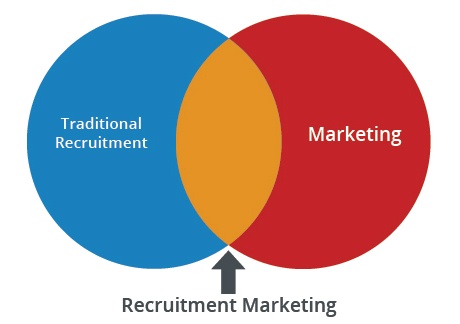
Editor's Note: The following blog is Part 2 of a 3-part series. You can read Part 1 here or skip ahead to Part 3 here.
As we discussed in part one of our series last week, marketing is a consumer-driven business function, and similarly, the ever-evolving recruitment industry is now a candidate-driven marketplace. This is due to a number of factors, but it's mainly attributable to the fact that candidates have access to any job opportunity in the world thanks to the internet.
In the past, an employer published a classified ad in the newspaper and waited until local candidates saw the ad and applied for the job in person. As you can imagine, this lead to a low volume of applications per job, meaning fewer candidates to choose from. Now, thanks to the evolution of recruitment and the way HR and talent acquisition professionals post jobs online, employers have access to job seekers all around the world, rather than just those in their neighborhood. And for these same reasons, job seekers have access to opportunities globally, rather than just locally.
The difficulty for businesses, then, doesn’t lie in a lack of candidates, but in the inability to effectively reach the most qualified candidates in a highly competitive market.
"Leading companies have figured out that in order to win over top talent, they must deliver a simple, fast and transparent recruitment process that focuses on candidates’ wants and needs. At the heart of this effort is infusing their recruitment operations with insights and best practices from marketing." - Tim Newnham, HR.com
As organizations are seeing, the highest quality candidates have a number of employment opportunities at their disposal. With the heightened level of competition in this “war for talent,” recruiters must proactively seek out candidates in the same way that marketers target new consumers, which is where recruitment marketing comes into play. Recruitment has evolved into “recruitment marketing” because of the need to think differently - to think more like marketers.
HR and talent acquisition professionals need to think of recruitment as marketing in order to be successful in this new, talent-driven ecosystem. To start, consider how the 4 C’s of marketing can apply to recruitment by replacing “consumers” with “candidates,” and understanding that the products or services that you’re marketing are actually your open jobs.
"The common thread among [predictions surrounding Recruitment Marketing tactics and best practices] is ability – the necessity – for recruiters to treat candidates the way marketers treat customers." - Tim Newnham, HR.com
Now that we’ve covered the marketing basics and how they can be applied to recruitment in a candidate-driven approach, we’ll focus on improving your communication through job content in Part 3 of our series. This will include keeping your job content fresh and convenient, so you’re able to get the most out of your recruitment costs.
info@recruitics.com
230 East Avenue
Suite 101
Norwalk, CT 06855
US +1 877 410 8004
© 2024 Recruitics • All Rights Reserved


